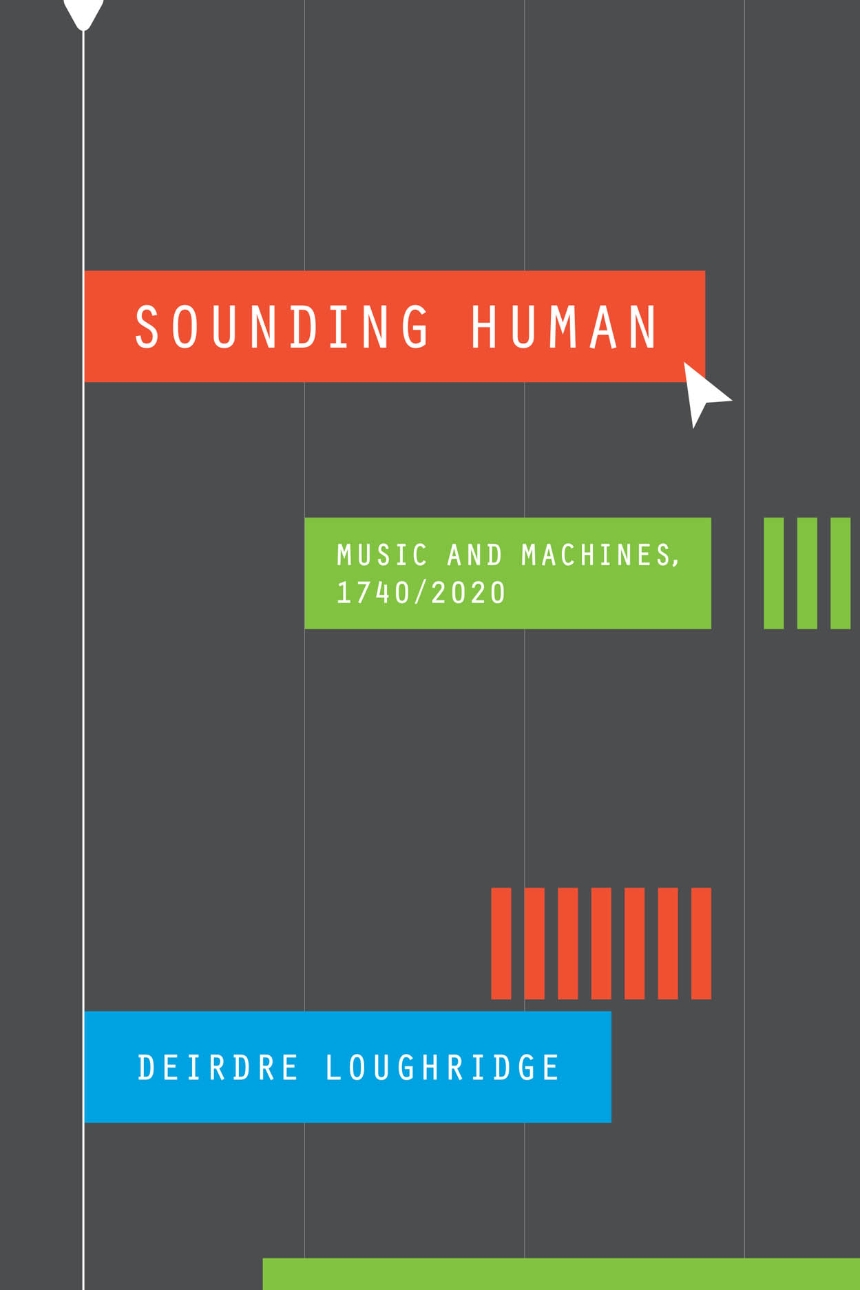Sounding Human
Music and Machines, 1740/2020
An expansive analysis of the relationship between human and machine in music.
From the mid-eighteenth century on, there was a logic at work in musical discourse and practice: human or machine. That discourse defined a boundary of absolute difference between human and machine, with a recurrent practice of parsing “human” musicality from its “merely mechanical” simulations. In Sounding Human, Deirdre Loughridge tests and traverses these boundaries, unmaking the “human or machine” logic and seeking out others, better characterized by conjunctions such as and or with.
Sounding Human enters the debate on posthumanism and human-machine relationships in music, exploring how categories of human and machine have been continually renegotiated over the centuries. Loughridge expertly traces this debate from the 1737 invention of what became the first musical android to the creation of a “sound wave instrument” by a British electronic music composer in the 1960s, and the chopped and pitched vocals produced by sampling singers’ voices in modern pop music. From music-generating computer programs to older musical instruments and music notation, Sounding Human shows how machines have always actively shaped the act of music composition. In doing so, Loughridge reveals how musical artifacts have been—or can be—used to help explain and contest what it is to be human.
From the mid-eighteenth century on, there was a logic at work in musical discourse and practice: human or machine. That discourse defined a boundary of absolute difference between human and machine, with a recurrent practice of parsing “human” musicality from its “merely mechanical” simulations. In Sounding Human, Deirdre Loughridge tests and traverses these boundaries, unmaking the “human or machine” logic and seeking out others, better characterized by conjunctions such as and or with.
Sounding Human enters the debate on posthumanism and human-machine relationships in music, exploring how categories of human and machine have been continually renegotiated over the centuries. Loughridge expertly traces this debate from the 1737 invention of what became the first musical android to the creation of a “sound wave instrument” by a British electronic music composer in the 1960s, and the chopped and pitched vocals produced by sampling singers’ voices in modern pop music. From music-generating computer programs to older musical instruments and music notation, Sounding Human shows how machines have always actively shaped the act of music composition. In doing so, Loughridge reveals how musical artifacts have been—or can be—used to help explain and contest what it is to be human.
See the supplementary audio examples for the book.
248 pages | 42 halftones | 6 x 9 | © 2023
New Material Histories of Music
History: History of Technology
Music: General Music
Reviews
Table of Contents
List of Audio Examples
Introduction: Sounding Human with Machines
1: Becoming Android: Reinterpreting the Automaton Flute Player
2: Hybrids: Voice & Resonance
3: Analogies: Diderot’s Harpsichord & Oram’s Machine
4: Personifications: Piano Death & Life
5: Genres of Being Posthuman: Chopped & Pitched
Coda: Learning Machines
Acknowledgments
Notes
Works Cited
Index
Introduction: Sounding Human with Machines
1: Becoming Android: Reinterpreting the Automaton Flute Player
2: Hybrids: Voice & Resonance
3: Analogies: Diderot’s Harpsichord & Oram’s Machine
4: Personifications: Piano Death & Life
5: Genres of Being Posthuman: Chopped & Pitched
Coda: Learning Machines
Acknowledgments
Notes
Works Cited
Index
